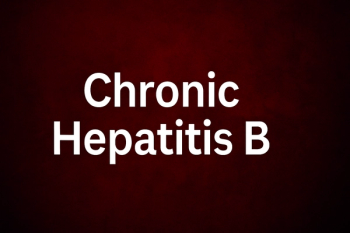
Patients with Beta-Lactam Allergy Need Unique Antimicrobial Stewardship
On March 5, 2017, at the 2017 Annual Meeting of the American Academy of Allergy, Asthma & Immunology (AAAAI) in Atlanta, Georgia, researchers from Rush University presented findings on the efficacy of a new guideline, which aimed to detect whether self-reported beta-lactam allergies were, in essence, unpleasant side-effects to the drugs.
Studies indicate that patients with an allergy to a class of antibiotics called beta-lactams (most commonly penicillin and cephalosporin) tend to have
Research presented at the 2017 Annual Meeting of the American Academy of Allergy, Asthma & Immunology (AAAAI) in Atlanta, Georgia, on March 5, by Rush University scientists indicated that altering the manner by which these patients are treated during their hospital stay could increase the efficacy of treatment for those who required beta-lactam therapies, while lowering hospital costs. Beta-lactam medications tend to be more effective than alternative therapies at treating infections without allowing for coinfections that extend and complicate a patient’s stay and treatment. They also tend to result in shorter hospital stays, thereby saving money for both medical facilities and patients.
A new guideline implemented at the study hospital focused largely on determining whether self-reported beta-lactam allergies were, in fact, allergies to the drugs rather than reports of unpleasant side effects, which might mean that a beta-lactam antibiotic with a different side chain could be administered safely. For example, a patient allergic to penicillin might still be safely treated with cephalosporin or carbapenem. In some cases, patients were tested for antibiotic allergies rather than to self-reporting, or were assisted with a graded challenge to determine whether or not they would be able to tolerate the treatment that physicians believed to be most effective. This is important, since in many cases of infection, the use of a beta-lactam drug is the most efficient form of treatment.
“Between June and December of 2014 and again in 2015, we screened 3,757 patients with beta-lactam allergy,” Shayna Ravindran, MD, a physician at the Rush University Medical Center, explained. Two hundred patients were randomly selected from the 2014 cohort, which was screened before the hospital implemented a hospital-wide, multidisciplinary guideline intended to decrease the use of broad-spectrum antibiotics in adults. In 2014, the research group studied 200 patients who were treated using the hospital’s existing guidelines. An additional 200 were randomly selected from the 2015 cohort, after the guideline was implemented.
“Retrospective review showed that 39.5% of the subjects [who declared an allergy] received vancomycin [in 2014] and 26.5% received it in 2015,” Dr. Ravindran noted. In 2014, the hospital response was to adjust treatment based on the stated allergy. In 2015, new guidelines provided more investigation via verbal interview, testing of alternative beta-lactam treatments from a different class of beta-lactam drug than the one that elicited the allergic response, and evaluation of the severity of the allergic reaction before ruling out the superior drug option. Dr. Ravindran added that “significantly more patients received any beta-lactam agent and penicillin after the guideline,” (21.5% vs. 35% and 1.5% to 6%, respectively). These findings provide evidence of the overall success of the guideline’s aim to screen individuals for reported beta-lactam allergies. Not surprisingly, the estimated costs of vancomycin and aztreonam at the facility fell from $25,298 to $17,836 when projections were based on a seven-day course of the medication thanks to the diminished use of the alternative treatments.
The importance of verifying beta-lactam allergies cannot be overstressed both because such an allergy often leads to the use of more diverse antibiotics (this can contribute to antibiotic resistance in a number of infectious bacteria), and because patients who cannot be treated with beta-lactam antibiotics often have
“Implementing a beta-lactam allergy clinical guideline and algorithm decreased [our hospital’s] broad-spectrum antibiotic use, increased beta-lactam use, and can decrease hospital costs,” said Dr. Rivindran. She added, “It is an effective tool that was implemented at our tertiary care center and could be expanded to others.”
Newsletter
Stay ahead of emerging infectious disease threats with expert insights and breaking research. Subscribe now to get updates delivered straight to your inbox.
















































































































































































































































































































